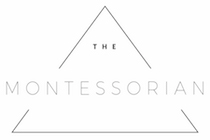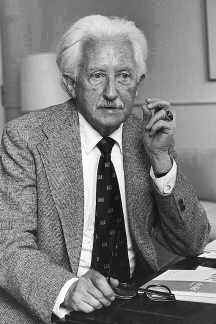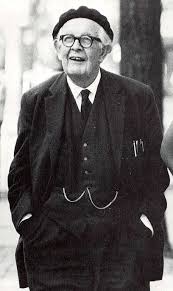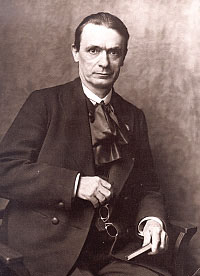Several educational theorists believe that there are different stages of development over the course of a human’s life. Some of these theorists include Maria Montessori, Erik Erikson, Jean Piaget, and Rudolf Steiner. In this section, Montessori’s theory about the developmental stages will be compared to those of the other three theorists mentioned above.
Erik Erikson
Erikson’s theory focuses on the psychosocial development of humanity (Mooney, 2013). He believed that there are eight ‘ages’ of humanity that cover the whole life span (Mooney, 2013). The age brackets seen in Erikson’s theory (refer to Table 1) are similar to those seen in Montessori’s planes and sub-planes, with some comparable terminology as well. Just as with Montessori’s planes of development, as the person passes through each of Erikson’s ages they adopt certain characteristics before passing on to the next age (Mooney, 2013). For each age of Erikson’s theory, Mooney (2013) specified a developmental stage and strength, similar to Montessori’s sensitive periods. However, Erikson also identified ‘weaknesses’ of each stage (Mooney, 2013).
Erikson believed that patterns were developed in the earliest years of life from the strengths and weaknesses acquired during that time (Mooney, 2013). These patterns would “… regulate, or at least influence, a person’s actions and interactions for the rest of his or her life” (Mooney, 2013, p. 55). This is comparable to the significance of Montessori’s ‘sensitive periods’ for a human’s development in the early years. Similarly, Erikson and Montessori both understood the importance of the early years for children’s development. However, Erikson thought that it was possible for a person to go back and ‘renegotiate’ any difficulties encountered in the first three stages.
| Erikson’s Stages of Psychosocial Development | ||
| Age | Stage | Strength Developed |
| Birth to 12 months | Trust vs. Mistrust | Hope |
| 1-3 years | Autonomy vs. Shame and Doubt | Willpower |
| 3-6 years | Initiative vs. Guilt | Purpose |
| 6-11 years | Industry vs. Inferiority | Competence |
| Adolescence | Identity vs. Role Confusion | Fidelity |
| Young adulthood | Intimacy vs. Isolation | Love |
| Middle age | Generativity vs. Self-Absorption | Care |
| Old age | Integrity vs. Despair | Wisdom |
Source: Mooney, C. G. (2013). Theories of Childhood: An Introduction to Dewey, Montessori, Erikson, Piaget & Vygotsky (2nd ed.). Minnesota: Redleaf Press.
Jean Piaget
Piaget followed Montessori’s work, using it as the foundation for his own educational theories (Mooney, 2013). He too believed that children need to do meaningful work for themselves and identified stages of cognitive development linked to age brackets (Mooney, 2013) (see Table 2). Contrary to Erikson’s ‘psychosocial’ stages, Piaget described his developmental theory as ‘stages of cognitive development’ (Mooney, 2013). He focused more on behaviours learned through these times, rather than ‘strengths’ or the broader characteristics identified by Montessori in her planes of development.
Piaget’s sensorimotor stage has strong correlations with Montessori’s first plane of development. They both believed that children first learn through absorbing information with unconscious thought, dubbed reflexive by Piaget (M. Montessori, 2012; Mooney, 2013). Both Montessori and Piaget understood that children process their environment through their senses in the first plane and the sensorimotor stage, and that this is where intelligence formed and cognitive development is started (M. Montessori, 2012; Mooney, 2013). Montessori and Piaget had differing views on the ages of the next developmental stage, with Piaget’s preoperational stage two to seven years of age, whilst Montessori considered this part of the sub-plane of the first plane, and considered the age bracket to be three to six years of age (M. Montessori, 2012; Mooney, 2013). They both viewed learning during these times as forming ideas from life experiences. Furthermore, Piaget recognised the importance of large blocks of time for ‘free play,’ based on Montessori’s theories about the uninterrupted work cycle (Mooney, 2013). Real life experiences were also considered vital by both theorists in children’s learning, providing opportunities for deeper construction of knowledge (Mooney, 2013).
| For the final two stages of Piaget’s developmental theory, similarities are evident with Montessori’s works in that the child moves from concrete thought to abstract thought. Mooney (2013) describes a flexibility of thought, where the child moves towards logical and hypothetical thought, where richer questions can be considered, and several qualities can be held in the brain at one time (Grazzini, 1979; Haines et al., 2000). While Montessori described young adulthood age brackets in detail as part of her developmental planes, Piaget’s stages of development are much broader and end with “11 or 12 years of age and older” (Mooney, 2013, p. 81). |
| |||||||||||||||||||||||||||||
Source: Mooney, C. G. (2013). Theories of Childhood: An Introduction to Dewey, Montessori, Erikson, Piaget & Vygotsky (2nd ed.). Minnesota: Redleaf Press.
Rudolf Steiner
Steiner believed in three stages of learning, with unique requirements for learning in each (Edwards, 2002). Steiner, like Montessori, viewed the first stage of learning as a time where learning is done through ‘doing’ with hands-on experiences. However, while they both cited this stage as a time for physical, intellectual, and emotional growth, Steiner put a much greater emphasis on the term ‘imaginary play’ (Edwards, 2002).
While this terminology is not seen as frequently in Montessori’s works (and her views on it created controversy), the descriptions of activities and characteristics are similar to the work and qualities of children in Montessori programs. For example, children will “… become deeply and engaged and develop powers of concentration and motivation” (Edwards, 2002, p. 5) through “bodily exploration, constructive and creative play, and oral … language” (Edwards, 2002, p. 4) in both Steiner and Montessori education. Both theorists recognised the importance of an uninterrupted work cycle and a regular schedule (Edwards, 2002). Furthermore, they both emphasised the significant impacts science, literature, music, and education through nature have on children’s learning.
However, a noteworthy difference between the two approaches was Steiner’s focus on learning through oral language rather than the concrete to abstract approach that Montessori employed (Edwards, 2002).
| Steiner’s Cycles of Child Development | ||
| Age | Stage | Characteristics |
| Birth to 7 years | Imitation | Learn through imitation and doing; imaginary play the most important ‘work’; educational focus on bodily exploration, constructive and creative play, and oral language. |
| 7-14 years | Imagination | Explore the world through conscious imagination; integrated, multisensorial approach to learning and expression. |
| High school | Intellect | Rational, abstract power of intellect emerges; focus on ethics, social responsibility, and mastery of complex and rigorous subject matter. |
Source: Edwards, C. P. (2002). Three approaches from Europe: Waldorf, Montessori, and Reggio Emilia. Early Childhood Research and Practice, 4(1)
Summary
Montessori’s planes of development have clearly delineated age brackets and characteristics, each of which plays its own significant role in the development of the human. A variety of educational theorists believed in these stages, with connections between Montessori’s theories and those of some other theorists evident. There were, however, some differences in their understandings of where the age brackets started and stopped, and differences in terminology or developmental characteristics.
The sensitive periods of development are evident in brain research as well as educational theory. Educational experiences that are tailored to meet the needs of children in these periods will provide rich learning that will be carried throughout life. Furthermore, these sensitive periods are intrinsically linked to Montessori’s concept of the absorbent mind. The absorbent mind processes and utilises what is learnt during each plane of development so the information can be used appropriately by the person.
The concepts discussed in this paper are evident in early childhood education today. The way children are observed, curriculum planned, and our understandings of child development owe a lot to the theories and research mentioned here. The work of theorists such as Montessori, Erikson, Piaget, and Steiner paved the way for quality, tailored education in modern society.
Reference List
Edwards, C. P. (2002). Three approaches from Europe: Waldorf, Montessori, and Reggio Emilia. Early Childhood Research and Practice, 4(1).
Grazzini, C. (1979). Characteristics of the child in the elementary school. AMI Communications, 29–40.
Haines, A., Baker, K., & Kahn, D. (2000). Optimal Developmental Outcomes: The social, moral, cognitive, and emotional dimensions of a Montessori education.
Montessori, M. (1966). The Secret of Childhood. (M. J. Costelloe, Ed.). New York: Ballantine Books.
Montessori, M. (2012). The Absorbent Mind. California: BN Publishing.
Mooney, C. G. (2013). Theories of Childhood: An Introduction to Dewey, Montessori, Erikson, Piaget & Vygotsky (2nd ed.). Minnesota: Redleaf Press.



